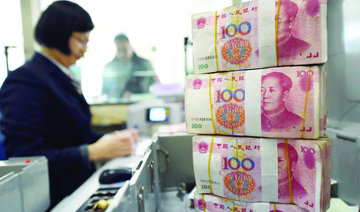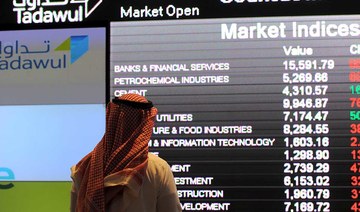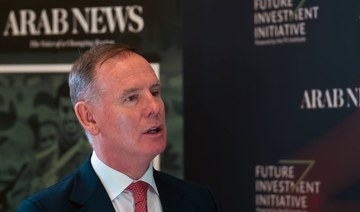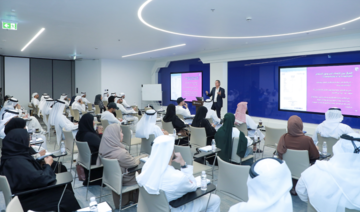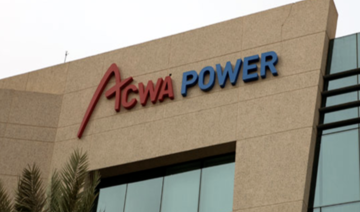TOKYO: The Renault-Nissan-Mitsubishi alliance said it is setting up a venture capital fund that plans to invest as much as $1 billion (SR3.75 billion) over five years, the latest move by major carmakers as they seek to adapt to rapid industry change by investing in startups.
It is set to be largest corporate venture capital fund in the auto industry over the period until 2022, the companies said in a statement.
The traditional auto industry model based on individual ownership is threatened by pay-per-use services such as Uber, as well as ride- and car-sharing platforms, a challenge heightened by shifts toward electric and self-driving cars.
The fund expects to invest up to $200 million in its first year and key potential areas of investment include vehicle electrification, autonomous systems and artificial intelligence, the statement said.
It will be 40 percent financed by Renault, 40 percent by Nissan Motor and 20 percent by Mitsubishi Motors.
The plan calls for the firms to establish the fund as a Dutch-registered joint venture headed by Francois Dossa, a former banker who led Brazil operations for Societe Generale and then for Nissan, sources familiar with the matter said.
The first deal by the fund, called Alliance Ventures, will be a strategic investment in Ionic Materials, a US-based firm that is developing solid-state cobalt-free battery materials.
The $200 million initial venture capital investment comes in addition to more than €8.5 billion in combined annual research and development investments by the three automakers.
Renault-Nissan-Mitsubishi launch $1 billion venture capital fund
Renault-Nissan-Mitsubishi launch $1 billion venture capital fund
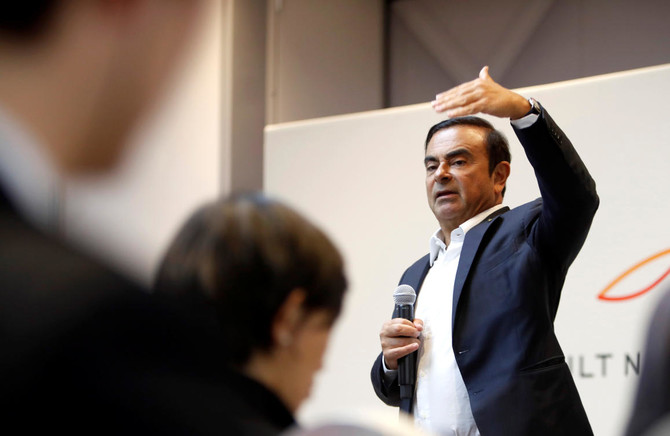
Closing Bell: TASI edges down to close at 12,357 points
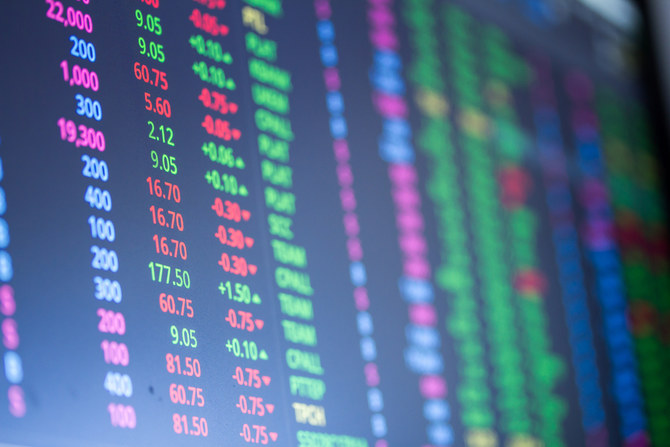
RIYADH: Saudi Arabia’s Tadawul All Share Index dipped on Tuesday, losing 14.51 points, or 0.12 percent, to close at 12,357.99.
The total trading turnover of the benchmark index was SR7.03 billion ($1.87 billion) as 70 of the listed stocks advanced, while 150 retreated.
Similarly, the MSCI Tadawul Index decreased by 1.42 points, or 0.09 percent, to close at 1,547.71.
The Kingdom’s parallel market Nomu slipped by 49.36 points, or 0.18 percent, to close at 26,741.64. This comes as 24 of the listed stocks advanced while as many as 28 retreated.
The best-performing stock of the day was Batic Investments and Logistics Co., whose share price surged by 6.36 percent to SR3.51.
Other top performers include Development Works Food Co. Ltd and Electrical Industries Co., whose share prices soared 5.42 percent and 4.97 percent to SR128.40 and SR5.70, respectively.
Other top performers include Saudi Co. for Hardware and Zahrat Al Waha for Trading Co.
The worst performer was Saudi Real Estate Co., whose share price dropped by 7.61 percent to SR22.34.
Other worst performers were Al-Baha Investment and Development Co. as well as Americana Restaurants International PLC, whose share prices dropped by 7.14 percent and 5.07 percent to stand at SR0.13 and SR3.18, respectively.
Additional poor performers include United Cooperative Assurance Co. and AlSaif Stores for Development and Investment Co.
On the announcements front, Americana Restaurants International PLC announced its interim financial results for the period ending on March 31, with revenues amounting to SR1.85 million, down from SR2.21 million in the corresponding period in 2023.
The company attributed the 16.3 percent decline to lower like-for-like sales due to ongoing geopolitical tensions in the region, as well as reduced sales volumes in March due to shifts in consumer behavior during Ramadan.
Net profits also decreased by 51.8 percent to reach SR105,090 in the first three months of 2024 compared to SR217,984 in the same period last year.
According to a statement by the company on Tadawul, this decrease was attributed to lower sales due to the geopolitical situation and the onset of Ramadan, as well as higher depreciation charges and rent expenses on account of new store openings during the period.
Saudi Real Estate Co. also announced its financial results for the same period, with revenues surging by 8.8 percent to reach SR427.6 million, compared to SR393 million in 2023.
The increase was primarily driven by a 28 percent surge in revenues from infrastructure projects, totaling SR56 million, and a 23 percent increase in rental revenue, totaling SR15 million.
However, the company’s net profits decreased in the first quarter of this year to SR2.9 million, marking a 67.4 percent decline compared to the same quarter in 2023.
This decline, as stated in an official Tadawul announcement, was attributed to an increase in cost of revenues resulting in a 13 percent increase, totaling SR34 million, a 14 percent rise in general and administrative expenses amounting to SR5 million, and an increase in finance costs by 14 percent with the amount of SR8 million
Riyadh Air, STA ink deal to launch new routes and destinations
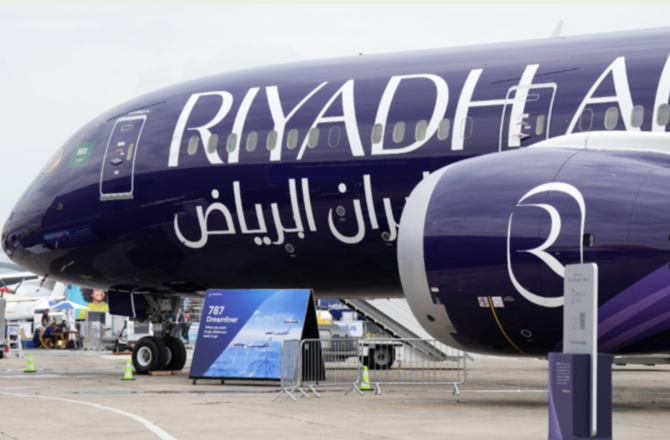
RIYADH: Saudi Arabia’s second flag carrier Riyadh Air will soon announce more routes and destinations thanks to a new agreement with the Kingdom’s official tourism body.
The airline, backed by the country’s Public Investment Fund, inked the memorandum of understanding with the Saudi Tourism Authority, at Dubai’s Arabian Travel Market.
According to a statement, Riyadh Air and STA will seek joint sponsorships and will collaborate at global trade shows and events.
The two parties will also work together to offer joint loyalty program schemes with exclusive offers and rewards to benefit guests.
“Increasing Saudi’s connectivity with the world is a key pillar of our tourism strategy and will ensure we sustain our rapid growth and meet our new ambitious target of 150 million visits by 2030,” STA CEO Fahd Hamidaddin said.
“This exciting new partnership with Riyadh Air will support our goals and ensure more visitors can travel to experience the cool mountains, pristine waters and dynamic cities that make Saudi a great year-round destination,” Hamidaddin added.
He added that the firm is currently connected to over 180 destinations and is aiming to triple annual passenger traffic to 330 million by 2030. The CEO also shed light on how as well this new agreement will help propel these efforts.
The new deal will also make airline booking processes simpler due to collaboration on payment solutions.
Riyadh Air CEO Tony Douglas added: “This is another momentous day in the history of Riyadh Air.”
He added: “Working alongside the STA to elevate the travel experience for our guests and those coming to visit the Kingdom of Saudi Arabia signifies what we’re all about.”
He also highlighted that the carrier is working on elevating aviation standards to previously unseen levels.
“We have a shared commitment to travel and tourism in the Kingdom along with our forward-thinking approach to innovation, sustainability, and the satisfaction of our guests,” the CEO concluded.
Earlier this week, Douglas said that the airline has plans to bolster its aircraft lineup through additional orders, as it requires “a very large fleet” to establish itself alongside regional giants.
This move came as the Kingdom’s second flag carrier ordered 39 Boeing 787-9 jets last year, with options for 33 more.
It also aligns well with Saudi Arabia’s goal to expand its aviation industry and attract more tourists, broadening its airline capacity beyond pilgrimage travel, which currently forms the backbone of the country’s inbound tourism.
Clean energy tech investments fueling global economic growth: IEA
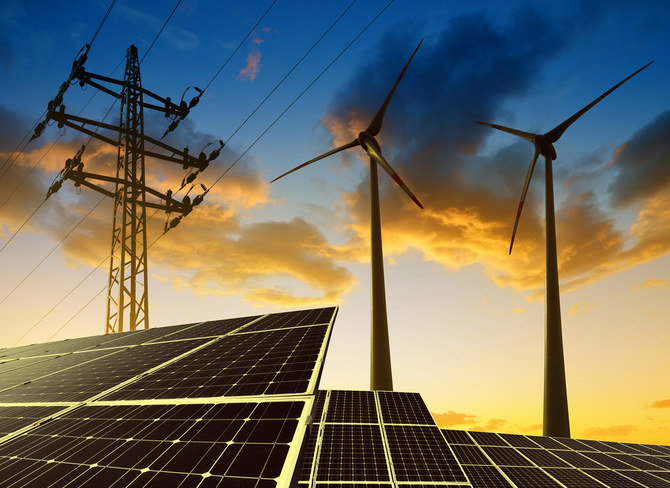
RIYADH: Booming investments in clean energy technology are strengthening the global economy by creating new industrial and employment opportunities, a report has outlined.
According to the International Energy Agency, global investment in the manufacturing of five key clean energy technologies – solar photovoltaic, wind, batteries, electrolyzers, and heat pumps – surged by 70 percent year-on-year in 2023 to $200 billion.
The IEA added that investments in clean technology manufacturing are becoming increasingly significant and are beginning to register in broader macroeconomic data.
According to the report, such investments in 2023 accounted for around 0.7 percent of worldwide investment across all sectors of the economy.
“In growth terms, the contribution is even starker — in 2023, clean technology manufacturing alone accounted for around 4 percent of global GDP (gross domestic product) growth and nearly 10 percent of global investment growth,” said the IEA.
Solar PV meets 2030 targets
The analysis revealed that investments in solar PV manufacturing more than doubled last year to $80 billion, while funding in battery production rose by around 60 percent to $100 billion.
Due to the surge in investments, solar PV module manufacturing capacity today is already in line with what is needed in 2030 based on the IEA’s net zero emissions scenario.
Similarly, for battery cells, if announced projects are included, manufacturing capacity is 90 percent of the way toward meeting net zero demand by the end of this decade, the report highlighted.
“Record output from solar PV and battery plants is propelling clean energy transitions — and the strong investment pipeline in new facilities and factory expansions is set to add further momentum in the years ahead,” said IEA Executive Director Fatih Birol.
He added: ‘While greater investment is still needed for some technologies — and clean energy manufacturing could be spread more widely around the globe — the direction of travel is clear.
“Policymakers have a huge opportunity to design industrial strategies with clean energy transitions at their core.”
The IEA also stated that around 40 percent of investments in clean energy manufacturing in 2023 were in facilities that are due to come online in 2024. For batteries, this share rises to 70 percent.
Battery manufacturing grows
Battery manufacturing also had a record year in 2023, with production totaling more than 800 gigawatt-hours, representing a rise of 45 percent from 2022.
The report highlighted that battery capacity additions also surged, with almost 780 GWh of cell manufacturing capacity added in 2023, around a quarter more than the previous year.
“Globally, battery manufacturing capacity could exceed 9 terawatt-hours by 2030 if all announcements are realized. Battery manufacturing deployment needs in 2030,” added the IEA report.
Similarly, new manufacturing capacity for wind and electrolyzers also grew faster in 2023.
According to the agency, the existing capacity for wind could deliver nearly 50 percent of the needs in 2030, while announced projects could meet a further 12 percent.
Meanwhile, capacity additions for heat pump manufacturing slowed due to stagnation in the majority of leading markets. The report added that the existing capacity could deliver only around one-third of the needs required in 2030.
China dominates clean energy
Clean energy manufacturing is still dominated by a few regions, with China home to 80 percent of the global solar PV module production capacity.
The report highlighted that the manufacturing of battery cells could become less geographically concentrated by the end of this decade if all announced projects are materialized.
After conducting plant-level assessments of more than 750 facilities, the IEA found that China remains the lowest-cost producer of all clean energy technologies.
“Battery, wind and solar PV manufacturing facilities are typically 20 percent to 30 percent more expensive to build in India than in China, and 70 percent to 130 percent more in the US and Europe,” the IEA said.
It added: “However, the vast majority of total production costs for these technologies; 70 percent to 98 percent, is estimated to come from operational costs, which include inputs such as energy, labor and materials — implying that production cost gaps seen today are not immutable and can be influenced by policy.”
Apart from China, the US, and the EU, other countries that heavily invested in clean energy technologies in recent years were India, Japan, and South Korea.
The report also highlighted that similar investments in Africa, Central America, and South America were negligible.
Multiple factors shape investments
The IEA revealed that cost is not the only factor that draws investments in the clean energy technology sector.
According to the think tank, several other factors, including the size of the domestic market, availability of skilled workers, and infrastructure readiness, are other crucial elements that shape the decisions of firms to invest in the sector.
“Policy interventions can therefore raise the attractiveness of investing in a given region without directly subsidizing the costs of manufacturing,” said the IEA.
It added: “Training and certification schemes for workers, compressing project lead times while maintaining environmental standards, enlarging domestic markets and reducing uncertainty with robust, stable climate policies are some key ‘low regret’ measures that can increase incentives to invest, irrespective of the role of direct incentives in industrial strategies.”
The report also underscored the vitality of research and development to increase the growth of clean energy manufacturing globally.
“While private-sector R&D can be stimulated by policies that promote manufacturing investment and experience, direct innovation support is also needed,” said the IEA.
The agency also noted that government initiatives, including R&D grants or loans, project finance, support for rapid prototyping, and promoting startups, will accelerate advancements in clean energy manufacturing.
Dubai Financial Services Authority sees 40% surge in new license registrations, CEO reveals
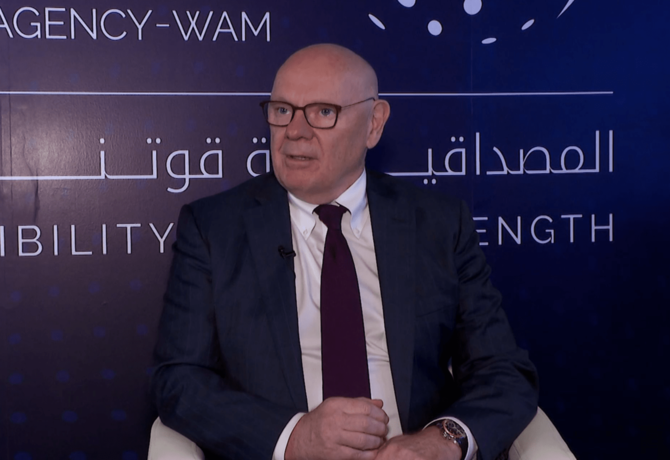
RIYADH: New license registrations through the Dubai Financial Services Authority increased by 40 percent in the first months of this year compared to the same period in 2023.
The organization’s CEO, Ian Johnston, confirmed the issuance growth to the Emirates News Agency on the sidelines of the 2nd edition of the Dubai Financial Technology Summit.
Johnston stated that 2024 is poised to be the most dynamic year yet for new license issuances, building on the momentum achieved in the past two years.
He added that this period will witness an abundance of new licensing activities, encompassing startups in the financial technology sector, as well as major corporations and international banks continuing to converge toward the Dubai International Financial Centre.
DIFC, a hub in the Middle East, Africa, and South Asia region, connects the area’s fast-growing markets with global economies and offers dining, retail, and living amenities, according to its website.
The CEO anticipated receiving over 100 applications from companies, with between 130 and 140 new businesses slated for licensing in the DIFC, reflecting the pace of growth, according to WAM.
He emphasized that the base serves as the primary international financial destination in the region, contributing to Dubai’s strategy to enhance its position as a global financial center in the Middle East.
He stated: “We are not only witnessing an increase in the number of companies we license, but also witnessing the success of these companies in the DIFC, facilitating individuals in conducting their business, as well as facilitating the conclusion of deals.”
Johnston emphasized Nasdaq’s role in Dubai’s global bond and sukuk listing hub, noting it as the world’s largest sustainable sukuk market, with over 60 percent in US dollars tied to environmental, social, and governance criteria, and around 50 percent across all currencies linked to governance and social responsibility.
He noted that Nasdaq Dubai has become the leading venue for listing environmental, social, and governance sukuk, demonstrating the increasing interest in sustainable investments and Nasdaq Dubai’s position as a preferred platform for such issuances.
Johnston anticipated that the DIFC would continue to experience further growth and activity in the current year, owing to Dubai’s established status as a regional financial center, highlighting that the center accommodates over 40,000 professionals, in addition to those working in finance outside the center.
The CEO indicated that Dubai is poised to emerge as one of the top four to five global financial centers in the coming years, stating: “We are already working toward achieving that as soon as possible.”
He stressed the Dubai Financial Services Authority’s goal to promote innovation by backing the fintech sector within regulations. This aligns with companies’ move toward regulatory compliance and proactive adoption of guidelines for stability and sustainable growth.
The authority had announced earlier in January that it had an exceptional growth year in 2023, saying in a press release: “The region’s leading regulator licensed and registered a record-breaking 117 firms during the 12-month period, an increase of 25 percent from the previous year.”
Johnston explained that regarding rules and governance, one of the positive developments occurring now is that financial technology operators are beginning to understand the regulatory process, and the task as regulators is to ensure that they impose directives to protect investors.
DIFC had recorded its highest gross written premiums in its 20-year history, amounting to $2.6 billion in 2023, marking a 23 percent increase from the previous year.
The center also recorded a 20 percent rise in the registration of insurance and reinsurance firms, including the first move of a Guernsey-based captive.
Saudi-Malaysian economic ties strengthen with launch of business council
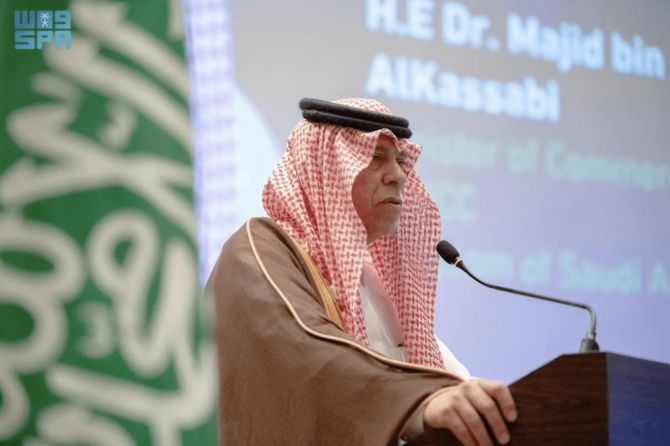
RIYADH: Economic ties between Saudi Arabia and Malaysia are set to soar with the launch of a business council aimed at catalyzing growth and collaboration across various sectors.
The council was inaugurated during the visit of Saudi Minister of Commerce Majed bin Abdullah Al-Qasabi, who led a delegation comprising 44 officials and leaders representing 20 government bodies and 24 private sector entities to the Southeast Asian country.
The minister announced the establishment of the business council, emphasizing its goal of enhancing economic relations between the two countries.
“We inaugurated today with the Minister of Investment, Trade and Industry, Tengku Zafrul Aziz the Saudi-Malaysian Business Council to contribute to strengthening economic and trade relations in the promising sectors in the two brotherly countries,” Al-Qasabi said in a post on his X account on May 6.
The Saudi minister further held a roundtable meeting with Aziz, attended by Sulaiman Mahbob, chairman of the Malaysian Investment Development Authority, and Dato Seri Reezal, chairman of the Malaysia External Trade Development Corp., along with Shaharul Sadri Alwi, director general of the Department of Standards Malaysia.
Al-Qasabi pointed out that the talks with Malaysian officials revolved around enhancing partnerships within the business sectors of both nations.
Concluding his visit to the Southeast Asian country, the commerce minister mentioned that he had also held meetings with Ewon Benedick, minister of entrepreneurship development; Mohamad Sabu, minister of agriculture and food industry; and Alexander Nanta Linggi, minister of works.
“We discussed cooperation in the areas of training, knowledge transfer, innovation, and sustainability, while also reviewing Malaysia’s experience in supporting small and medium-sized projects,” Al-Qasabi said.
During the meetings, efforts to encourage exports and enhance the capabilities of Saudi and Malaysian companies to access global markets were discussed, the Saudi Press Agency reported.
It added that collaboration in capacity building in innovation, emerging technologies, research programs, and e-commerce was emphasized.
Al-Qasabi affirmed that Saudi Arabia’s Vision 2030, launched by Crown Prince Mohammed bin Salman, has brought about significant transformations in the Saudi economy since its announcement in 2016.
He noted the close trade relations between Saudi Arabia and Malaysia, highlighting significant opportunities for expansion and diversification. The minister emphasized Saudi Arabia’s efforts to become a global hub for trade and logistics services.
In conjunction with the Saudi delegation’s visit to Malaysia, representatives from the Federation of Saudi Chambers, led by Secretary-General Waleed Al-Orainan, participated in the meeting aimed at exploring investment opportunities in both countries.
The meeting concluded with the signing of significant partnership and investment agreements between the two sides.
Al-Orainan and the President of the National Chamber of Commerce of Malaysia, Tan Datu, signed an agreement to enhance economic cooperation.
Moreover, private sector companies from both countries held bilateral meetings and signed trade and investment partnership agreements in multiple sectors.



